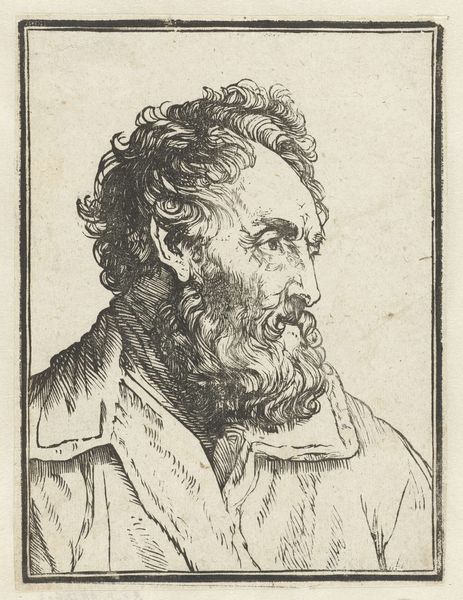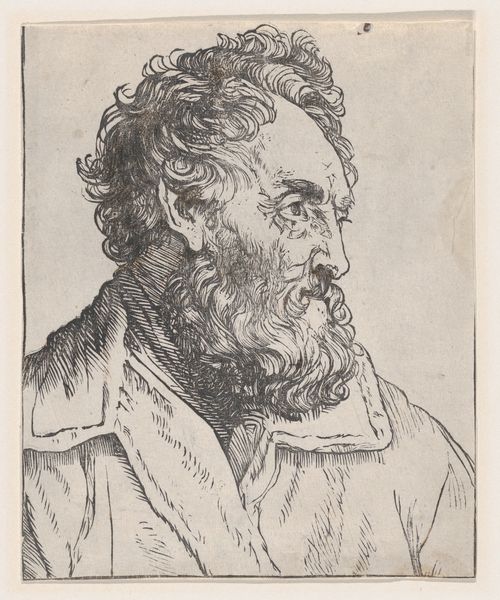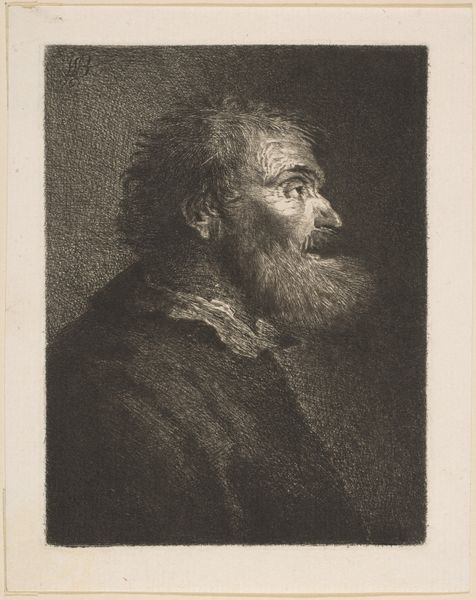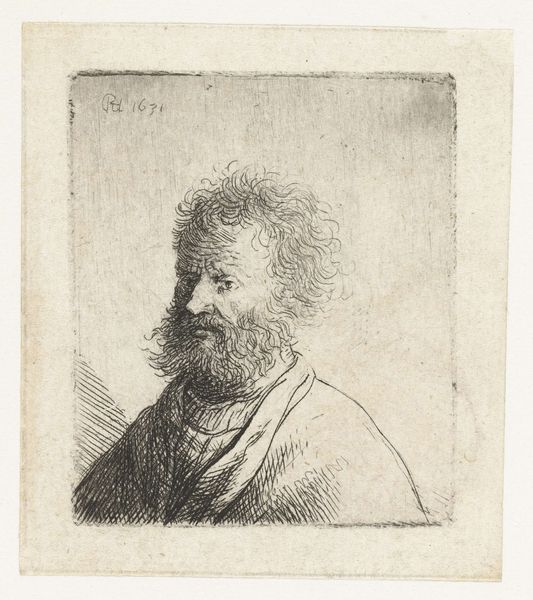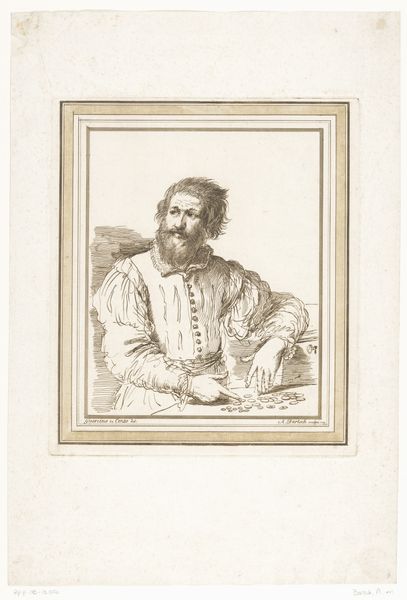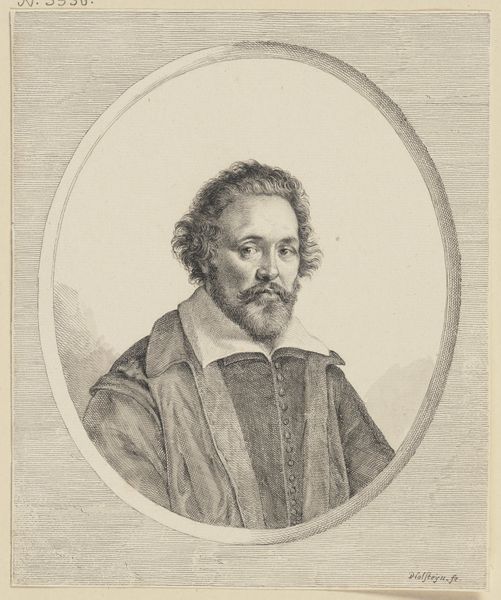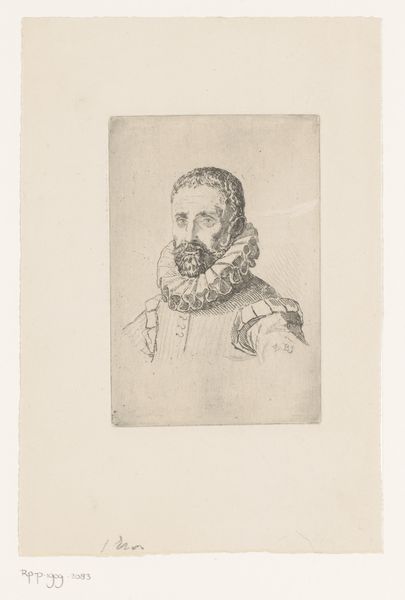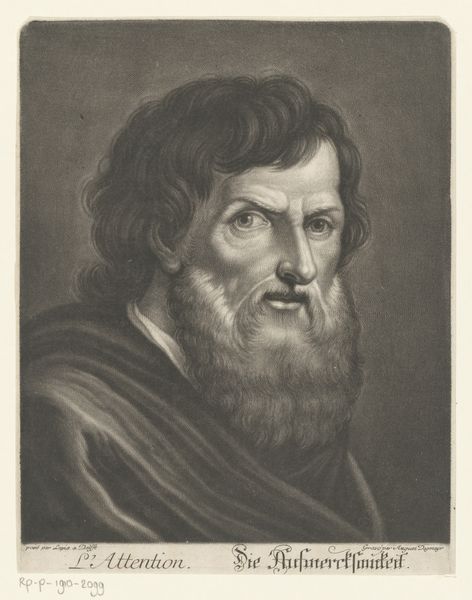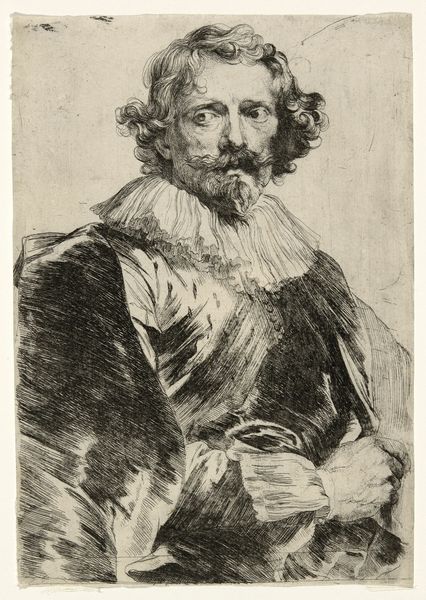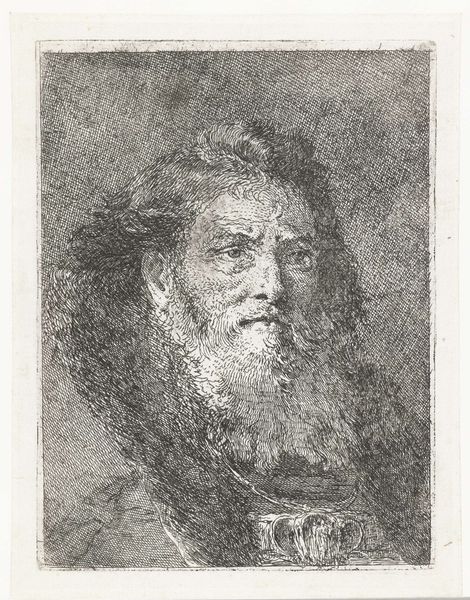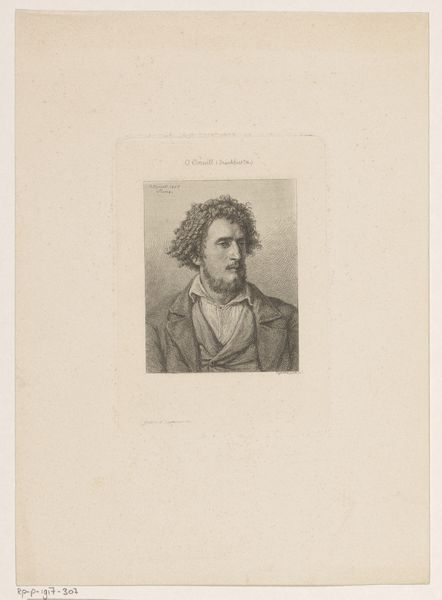
Portret van een onbekende man met krullend haar en een volle baard 1746 - 1816
0:00
0:00
johannantonriedel
Rijksmuseum
Dimensions: height 137 mm, width 108 mm
Copyright: Rijks Museum: Open Domain
Editor: Here we have a rather striking Baroque portrait, "Portret van een onbekende man met krullend haar en een volle baard," created sometime between 1746 and 1816 by Johann Anton Riedel. It's a print – an engraving on metal and paper, held at the Rijksmuseum. What I immediately notice is the incredibly dense hatching used to create texture. How would you interpret Riedel's artistic choices here? Curator: Look closely at the production of this print. Notice the painstaking labour involved in the engraving process. Consider the social context in which this artwork was made. How does the accessibility of prints—compared to painting, say—democratize portraiture and alter consumption patterns of images during this period? Editor: So you're saying it’s not just about *who* is portrayed, but also *how* the portrait reached its audience? Curator: Exactly! Consider the role of the engraver: a skilled craftsperson reproducing images for broader consumption. Where does that place Riedel within the established art world, challenging these boundaries? We should not forget how different the act of reproducing and distributing many works with a printing press contrasts with creating singular, exclusive images using paint, for instance. Editor: That’s fascinating. It makes you think about the whole system of art production, not just the final image itself. I am curious whether this piece might prompt more questions about labor within other media. Curator: Indeed. Looking at it through a materialist lens reveals layers of social and economic information encoded within the artwork. We can better reflect on how consumption of imagery has evolved and changed since the eighteenth century.
Comments
No comments
Be the first to comment and join the conversation on the ultimate creative platform.

